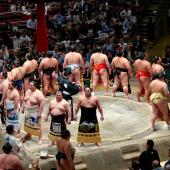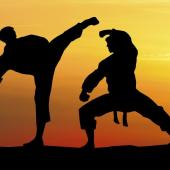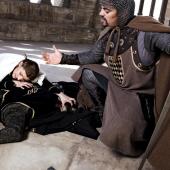Karate
Karate literally means "empty hand". The history of karate can be traced back to the 19th century to Okinawa. After the Second World War going out from Japan karate became one of the most popular forms of martial art next judo and ju-jitsu. We take a closer look at this form of martial arts.
There are four major styles of karate, namely Goju-Ryu, Shotokan, Shito-Ryu and Wado-Ruy. All styles have a "Sensei" – a teacher –, as well as a "Senpai" and "Kohai" – students – in common. Each karate training traditionally starts and ends with a short meditation, which is to glorify the teaching path of karate. Likewise, a ritual welcoming ceremony is traditionally held. This is based on the first principle of the 20 rules of Gichin Funakoshi, who said: "Karate wa ni rei rei ni owaru Hajimari koto" - "Karate begins and ends with respect".
In karate you are, so to say, deeply ingrained. The techniques always aim to establish a proper connection between the floor and one´s feet. The proper use of ankles, knees, upper leg and hip is of great importance for stable footing for footwork. It also depends on the correct use of the upper body, so the shoulders, the back, arms and elbows. Here dynamic offensive and defensive techniques are trained.
"Kata" in karate means the execution of individual techniques. Technology, footing, line of sight, breathing and the position in the room are some aspects that are considered, learned and performed in the context of kata. In "Kihon", the primary school of karate, the basic techniques then get connected with frontward, backward and lateral movements.
In karate a uniform exercise clothing is worn. The so-called "karate-gi" is a simple, white trousers (Zubon) that is laced at the hip and a jacket (Uwagi). Furthermore, from judo one took the graduation that differs by coloured belts. The student grades are called "kyu". They are white, yellow, orange, green, blue/purple and brown. The masters of Karate can be recognized by their black or red and white belts and call themselves "dan".




